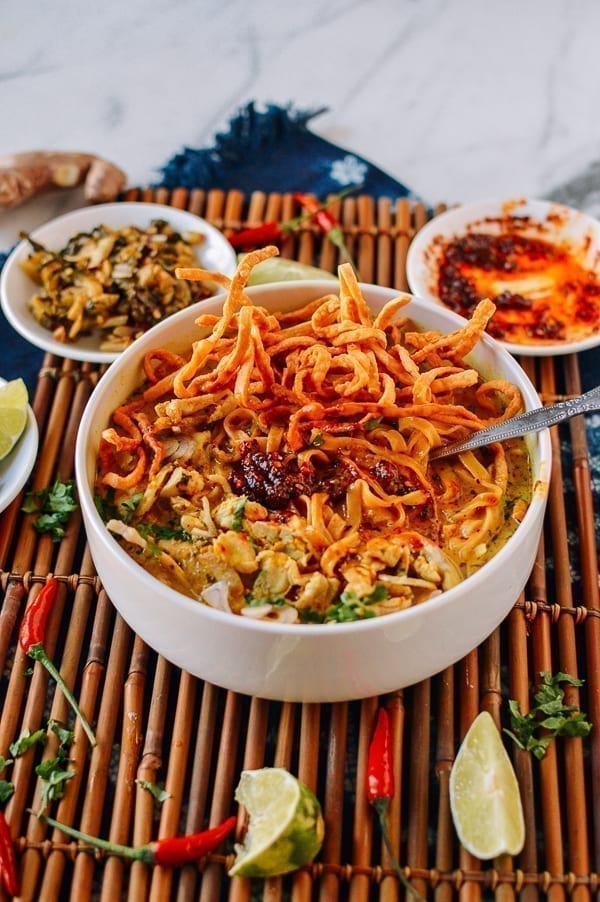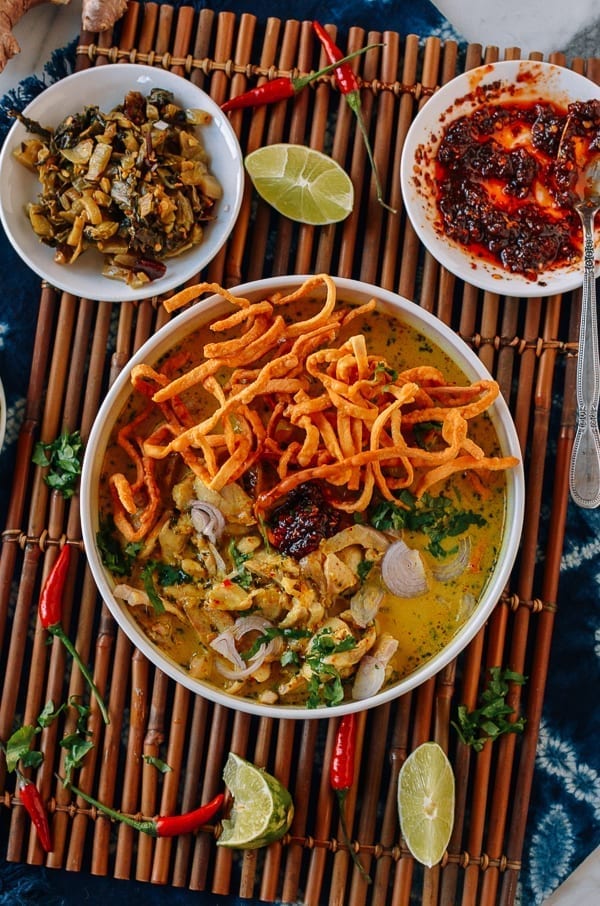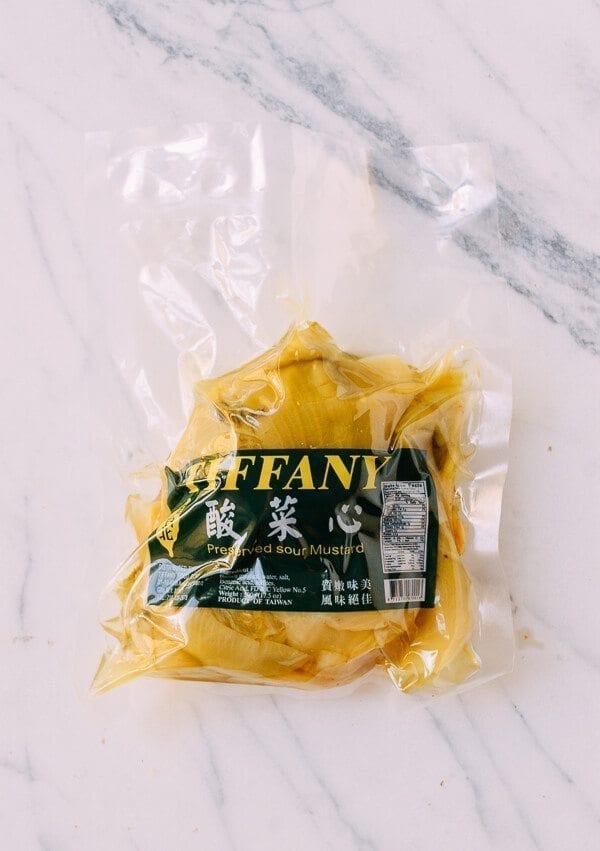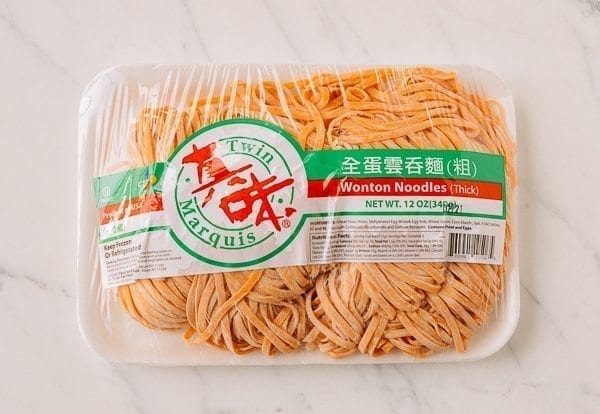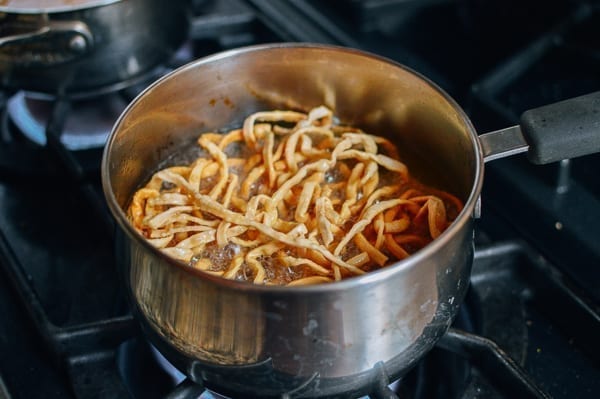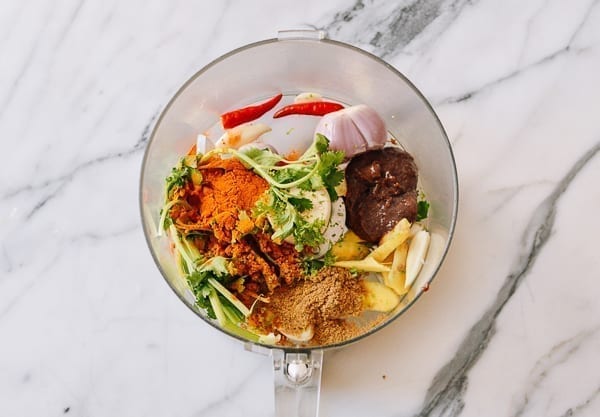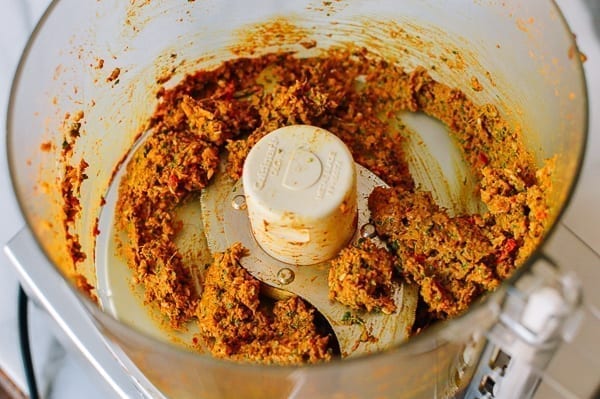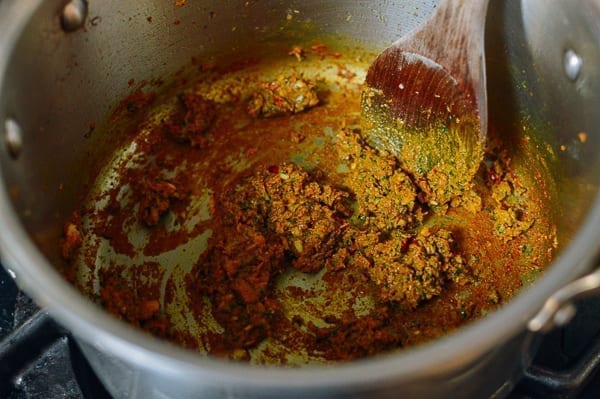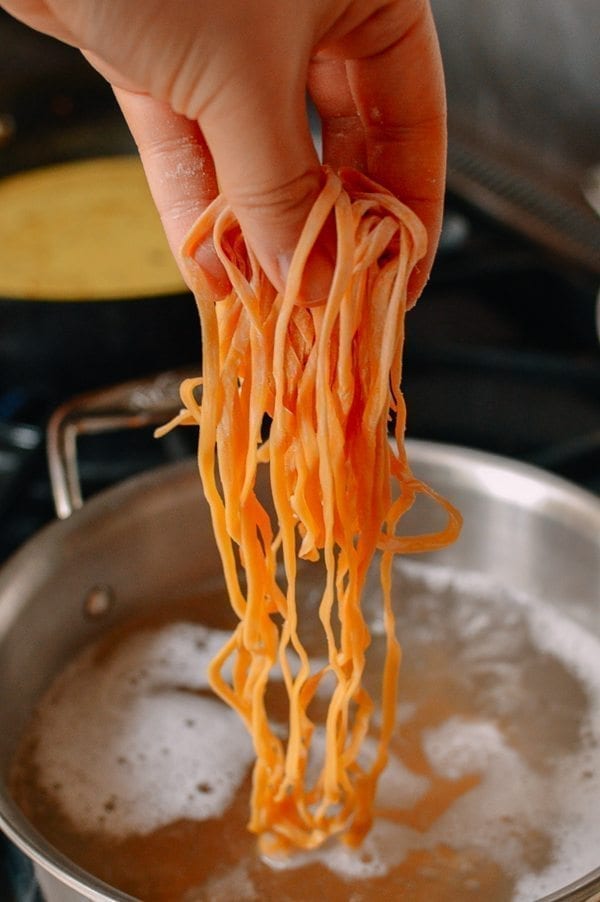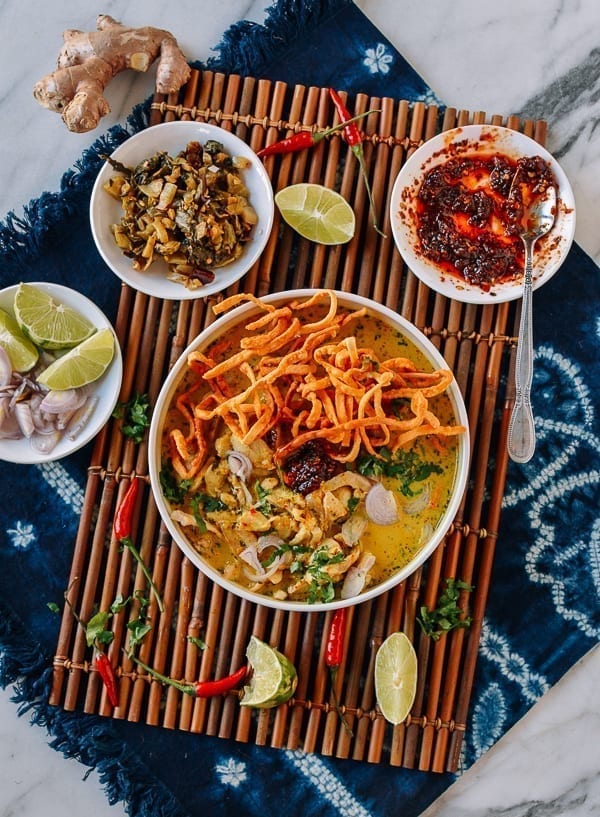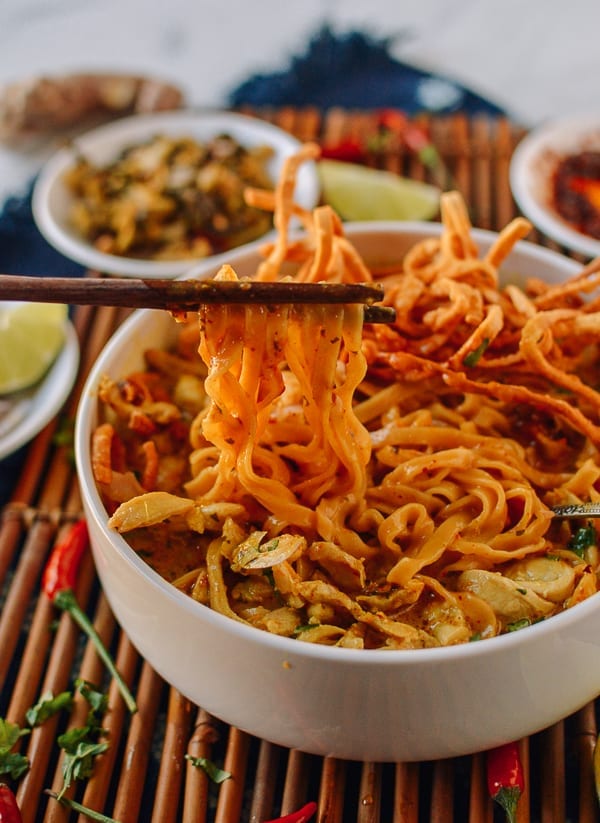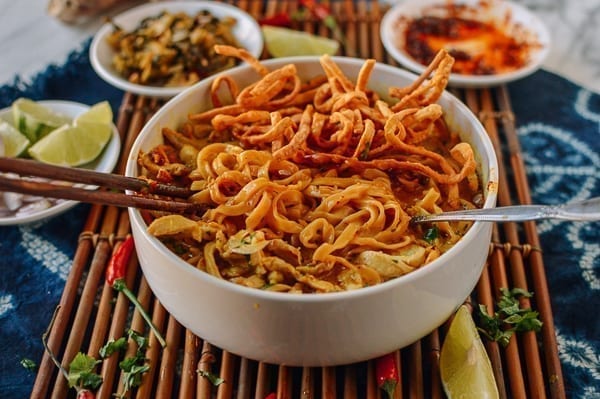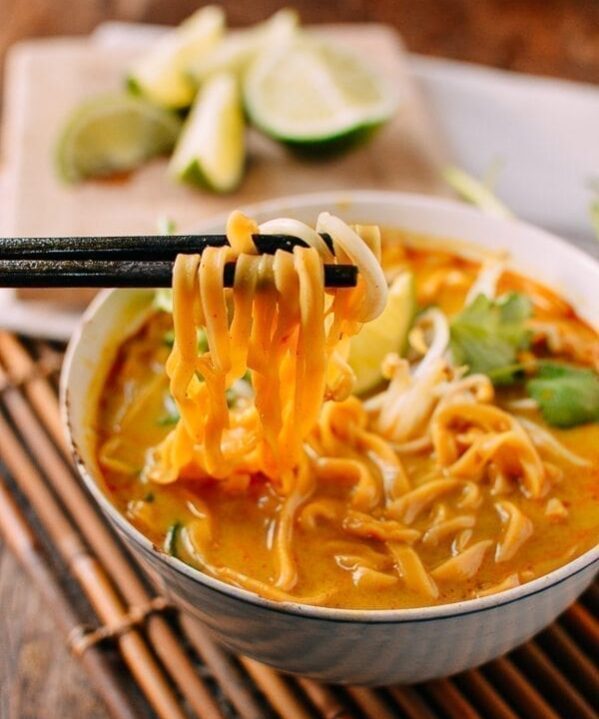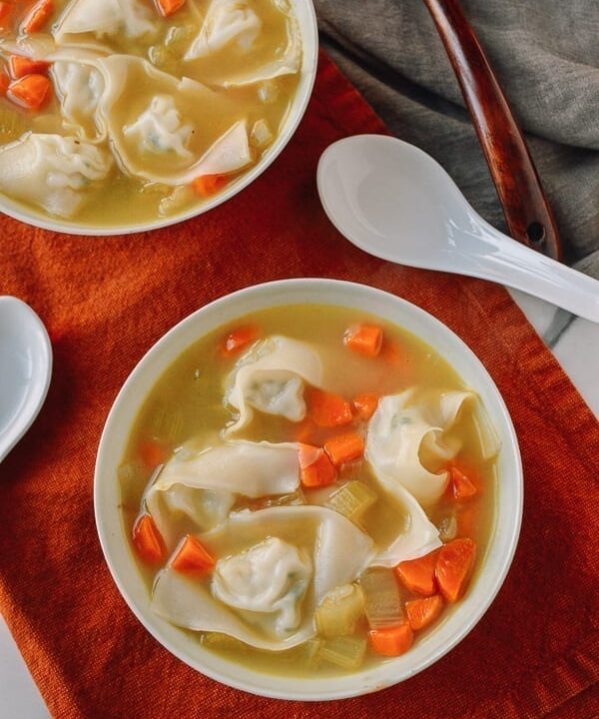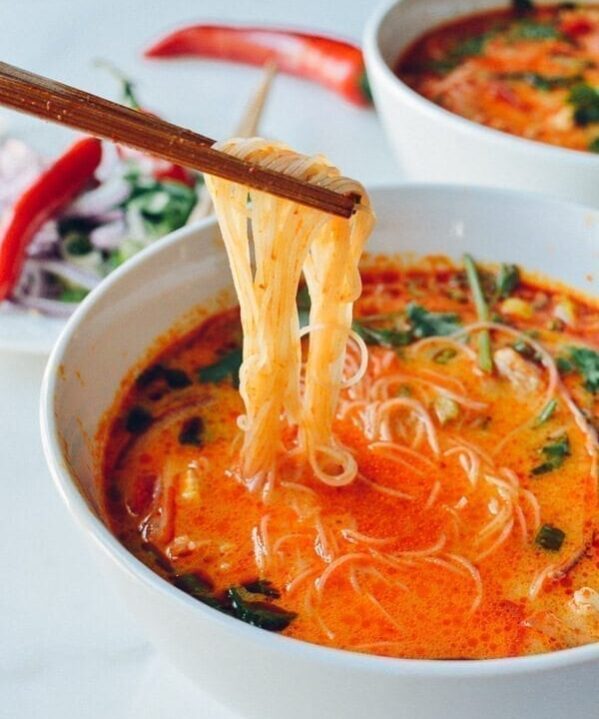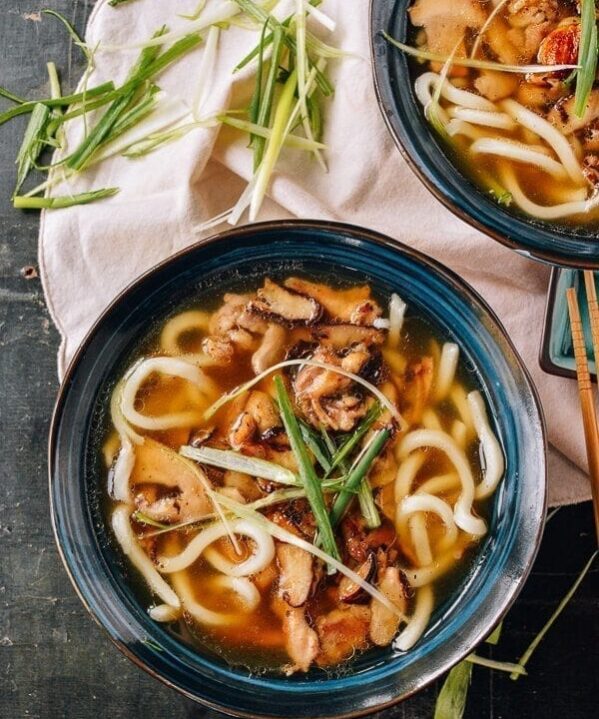With the craziness going on around us, we all need a little escape. Allow me to bring you the cooking equivalent of the best escapist TV––this Chicken Khao Soi recipe. Straight from the streets of Chiang Mai, Thailand!
Plus, with restaurants closing amidst local efforts to enforce social distancing (it’s all takeout and delivery only where Justin and I live), it’s kind of comforting to know that you can make this sort of dish at home––one you’d only normally get at a restaurant.
If you don’t necessarily have all the ingredients to make this particular noodle soup, you can also try our 15-Minute Coconut Curry Noodle Soup, which is like a shortcut version with similar flavors (you just need some boxed stock or bouillon, coconut milk, red curry paste, and dried noodles). You could also try this more Malaysian-style Curry Mee recipe!
For more ideas on recipes you can make from what you may already have available at home, check out this recent roundup of our favorite pantry and freezer recipes!
What Is Khao Soi?
Khao soi is a coconut curry noodle soup hailing from Northern Thailand, Myanmar, and Laos. It consists of noodles in a thick, rich coconut broth, and usually chicken or beef.
There are many variations, including how the broth is made, what the protein base is, the type of noodles used, and other more regional variations. Our version today is based on a Northern Thai rendition.
Some of the common threads across those versions are:
- A thick, rich broth: Khao soi is not a particularly “brothy” noodle soup. The “soup” part of the dish is more like a thick, soupy gravy, made very rich by the coconut milk.
- Crispy Noodles: Most versions are topped with crispy fried egg noodles, which give the dish crunch and that nutty, rich flavor you can only get from the deep fryer.
- Toppings: Khao soi is served with several toppings, usually including chopped cilantro, sliced shallots, pickled mustard greens/stems, nam prik pao (a Thai sweet/spicy chili sauce), and fresh lime.
Recipe Notes
Why The Two Pastes?
You may be wondering why I choose to make my own curry paste and then also add prepared red curry paste to my Khao Soi. While canned curry paste is delicious and full of flavor, I think it can definitely benefit from a little bit of brightening up with fresh ingredients. I think that the fresh and prepared curry pastes together make for a well-balanced flavor in the final broth.
What Kind of Pickled Mustard Greens?
While I’ve never actually been to Thailand myself, my research (videos like this Khao Soi tour of Chiang Mai were especially helpful) has led me to my recommendation to use pickled mustard stems for this Khao Soi. See the image below! You could also use pickled mustard greens, which are more leafy. They will impart a similar flavor.
Where Do I Get Crispy Noodles?
You may be able to buy crispy noodles already fried from your local Chinese grocery store, but we recommend frying them yourself! I used wide Chinese egg noodles for the soup (they’re labeled “thick wonton noodles”).
These noodles can also be fried until golden brown and served on top! Just heat a small pot of oil until it reaches about 350 degrees F, and put the fresh noodles directly into the oil. When they’ve turned golden brown and crisp, they’re done!
Khao Soi Recipe Instructions
Add all the curry paste ingredients to a food processor…
And pulse until you get a smooth paste.
Heat oil in a large pot over medium high heat. Add 2 tablespoons vegetable oil and stir-fry the chicken until browned.
Remove from the pot and set aside. To the fat left in the pot, add the paste. Fry for 3-5 minutes, until fragrant.
Add the canned Thai red curry paste, broth, and brown sugar, and bring to a boil. Reduce the heat to low. When the broth is at a low simmer, add the coconut milk and fish sauce. Add the chicken back to the broth.
Meanwhile, cook the noodles according to package instructions.
To serve, divide the noodles among 4 bowls. Cover with chicken and broth, and garnish with sliced shallots, lime wedges, pickled mustard greens, fried noodles, cilantro, and Thai chili paste.
Chicken Khao Soi (Thai Coconut Curry Noodle Soup)

Ingredients
For the khao soi paste:
- 2 Thai bird's eye chilies
- 2 medium shallots
- 6 cloves garlic
- 1-inch piece ginger (peeled and sliced)
- 1/4 cup cilantro (stems and leaves, rinsed)
- zest of 1 lime
- 2 teaspoons ground turmeric
- 2 teaspoons ground coriander
- 1 teaspoon curry powder
- 2 tablespoons shrimp paste (Thai, filipino, or Chinese shrimp pastes will all work; can substitute laksa paste)
For the soup:
- 2 tablespoons vegetable oil
- 1 pound boneless, skinless chicken thighs (sliced)
- 2 tablespoons Thai red curry paste
- 4 cups low sodium chicken stock
- 2 teaspoons brown sugar
- 14 ounces unsweetened coconut milk
- 3 tablespoons fish sauce (or to taste)
- 1 pound fresh Chinese egg noodles (thick wonton noodles work well)
To garnish:
- thinly sliced shallots
- lime wedges
- pickled mustard stems/greens
- crispy noodles
- chopped cilantro
- Thai chili paste (Nam Prik Pao)
Instructions
- Add all the curry paste ingredients to a food processor and pulse until you get a smooth paste.
- Heat oil in a large pot over medium high heat. Add 2 tablespoons vegetable oil and stir-fry the chicken until browned. Remove from the pot and set aside. To the fat left in the pot, add the paste. Fry for 3-5 minutes, until fragrant. Add the canned Thai red curry paste, broth, and brown sugar, and bring to a boil.
- Reduce the heat to low. When the broth is at a low simmer, add the coconut milk and fish sauce. Add the chicken back to the broth.
- Meanwhile, cook the noodles according to package instructions.
- To serve, divide the noodles among 4 bowls. Cover with chicken and broth, and garnish with sliced shallots, lime wedges, pickled mustard greens, fried noodles, cilantro, and Thai chili paste.
